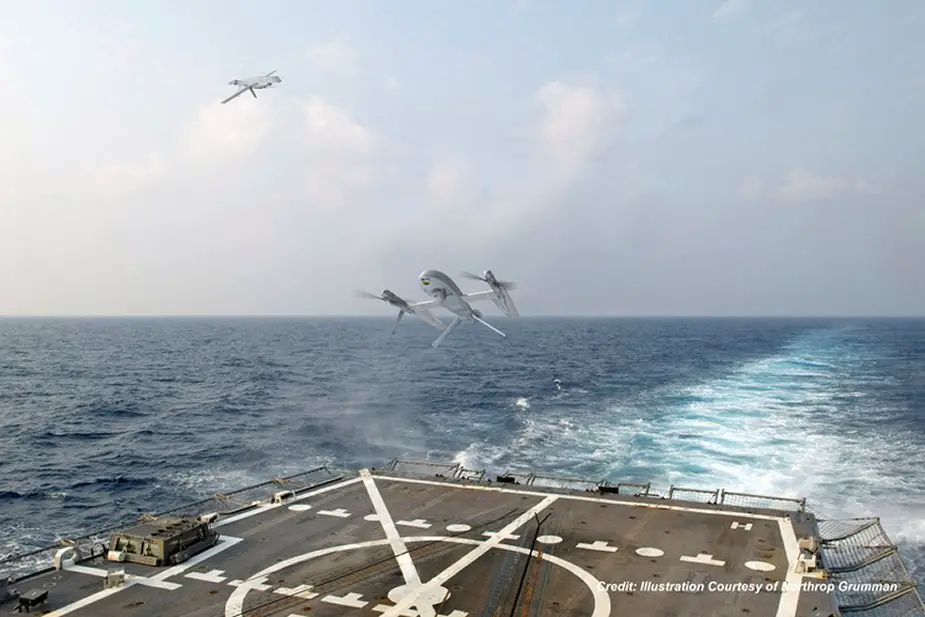Breaking news
Northrop Grumman to develop VTOL drone Ancillary for DARPA.
According to a PR published by Northrop Grumman on July 13, 2023, Northrop Grumman Corporation has won a contract from the Tactical Technology Office of the Defense Advanced Research Project Agency (DARPA) for designing an autonomous, vertical takeoff and landing (VTOL) drone system that can function from a moving naval vessel at sea.
Follow Navy Recognition on Google News at this link
 Artist rendering of the future VTOL drone Ancillary. (Picture source: Northrop Grumman)
Artist rendering of the future VTOL drone Ancillary. (Picture source: Northrop Grumman)
The innovative drone system, named AdvaNced airCraft Infrastructure-Less Launch And RecoverY (Ancillary) demonstrator, is aimed to be a cost-effective, versatile vehicle built on a nimble platform that does not require a runway.
Capable of carrying a substantial 60-pound sensor payload, Northrop Grumman's Ancillary will feature an impressive endurance of 20 hours' station time and a mission radius range of 100 nautical miles.
This outperforms current systems without necessitating substantial extra infrastructure beyond what the air vehicle carries. It will also be equipped to touch down on a ship amid challenging weather conditions.
The Ancillary drone will be designed to conduct intelligence, surveillance, reconnaissance, and targeting operations. Additionally, it will support special operations forces on expeditionary missions and logistics missions, providing significant cost savings for the transition of parts and supplies from ship to shore.
About the Ancillary
Ancillary, a DARPA initiative, is aimed at designing and test-flying an X-plane equipped with critical technologies that will make a significant leap in the performance of long-endurance, VTOL unmanned air systems (UAS).
This UAS would be capable of launching and recovering from the flight decks of ships and small, remote land locations under adverse weather conditions without any additional infrastructure.
This feature would pave the way for expeditionary deployments. Unlike larger VTOL systems, the compact size of the UAS would allow several drones to be stored and operated from a single ship, creating a tactical, beyond-line-of-sight, multi-intelligence sensor network capability.



















